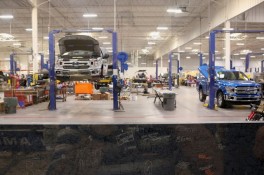Small businesses seem to be the driving force for hiring in this economy, reveals a report released today by TD Economics. The rate of companies that are hiring is still very low, while the amount of people no longer with their jobs, either because they quit or were fired is much lower. While such statistics may seem to show a job market that is recovering, this actually shows that employees are concerned about the absence of better job opportunities.
According to Beata Caranci, TD's Vice President and Deputy Chief Economist and author of the report, improvements or regressions in the economy can be seen "by looking at the flow of people leaving and starting new jobs. Small businesses are the main driver of these flows." She emphasized that "Small businesses exhibit job churn at three times the rate of larger businesses." Caranci added that "the Great Recession and subsequent slow recovery has curtailed the number of new start-up firms, hit the survivorship and stunted hiring intentions of those success stories. This in turn has impacted job churn in the overall labor market."
The report highlights several facts about small business hiring. It reveals that a vigorous job market is best examined through "churn" or the rate at which the number of workers leave their jobs compared to amount of employees starting a new position. Small businesses, that have less than 250 employees, seem to be increasing their labor force at three times the pace as larger companies. However, some small firms seem to be suffering from "the Great Recession and slow recovery". As a result, the amount of "start-ups" that have launched has decreased.
Ms. Caranci also reveals that recent graduates or "younger workers -- will not return to pre-recession levels until conditions for small businesses do. Unfortunately, this is going to be a slow grind upwards." Because the recession has made career movement for young employees difficult, the report indicates that new entrants into the workforce could have "lower life-time earnings".
A younger workforce, according to a Census Bureau study showed that a younger workforce is more likely to be employed with small businesses rather than large companies. It discovered that 45% of people working at businesses that were five years old or less had employees whose ages averaged 35 years old or younger. On the other hand, older and larger companies had the majority of their employees at ages 45 and older.
As far as the value of small businesses in this economy, Ms. Caranci concluded that "Hiring rates will not return to normal without the express participation of small businesses and the churn." However, she admitted that "It will take more time, but the prospects for economic growth and a stronger labor market will rise significantly as conditions continue to improve for small businesses."
© 2017 Jobs & Hire All rights reserved. Do not reproduce without permission.




